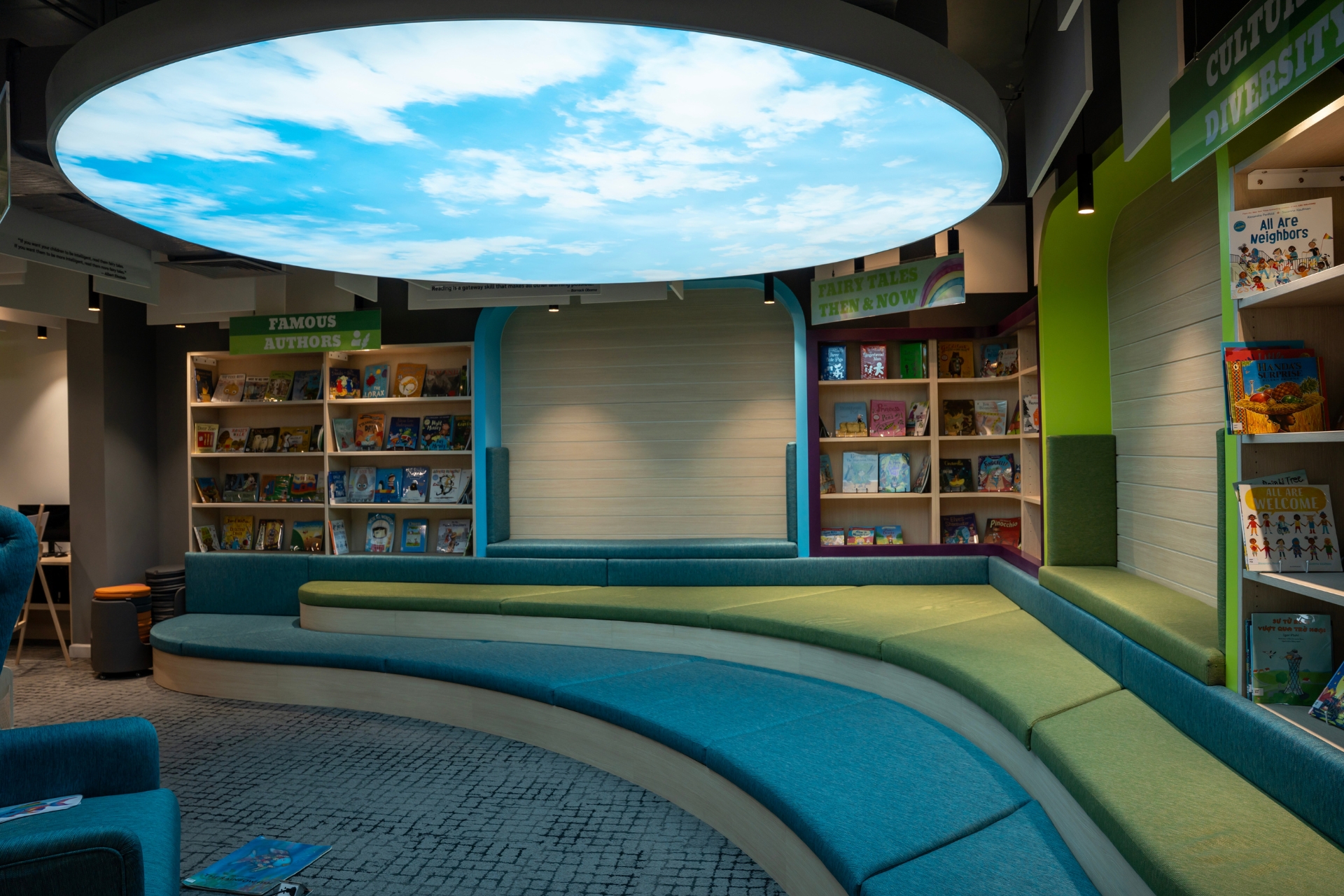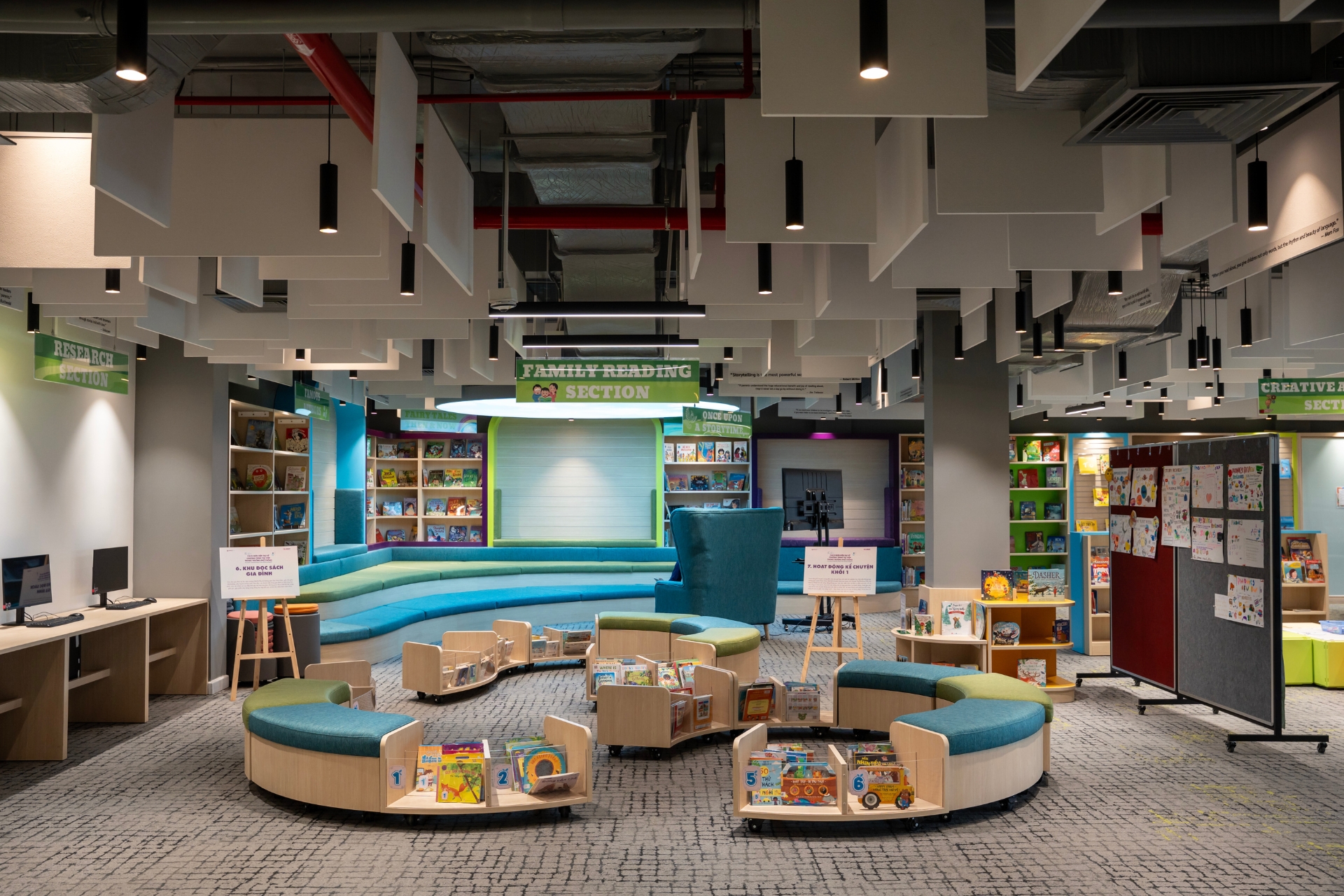
Designing International Preschools: Montessori, Reggio Emilia & STEAM Models
In the field of international early childhood education, school design is not only about building facilities but also about transforming educational philosophy into real spaces. Currently, three globally influential and popular approaches are the Montessori, Reggio Emilia, and STEAM models. Each model has its own characteristics, from educational philosophy to spatial design orientation, contributing to the unique identity of international preschools. In the article below, let’s explore with TECO the general features as well as the design styles of each educational model.
1. Designing International Schools Following the Montessori Model
Overview of the Montessori Method
Montessori is an educational method founded by Dr. Maria Montessori, focusing on encouraging children to be independent, develop personal skills, and learn through real-life experiences. The core of the Montessori model is “child-centered” – teachers act as guides instead of directly instructing, helping children to self-explore, self-regulate, and develop at their own pace.
In the context of international education, the Montessori model is favored for its flexibility and its ability to foster comprehensive development in children—intellectual, emotional, social, and physical.
Spatial Design According to the Montessori Model
Designing international schools based on the Montessori model must meet the criteria of freedom – order – and connection with nature. Some outstanding spatial features in Montessori environments include:
-
Open classrooms with clear zones: Each area is arranged for different activities such as mathematics, language, arts, and movement. Children can freely choose activities based on their interests.
-
Child-sized furniture: Tables, chairs, bookshelves, and storage racks are designed low, enabling children to access them easily and practice independence.
-
Natural materials: Wood, bamboo, fabric, and stone are often used to create a warm, familiar feeling.
-
Optimized natural light: Large windows and open spaces help children connect with nature and experience the natural rhythm of day and night.
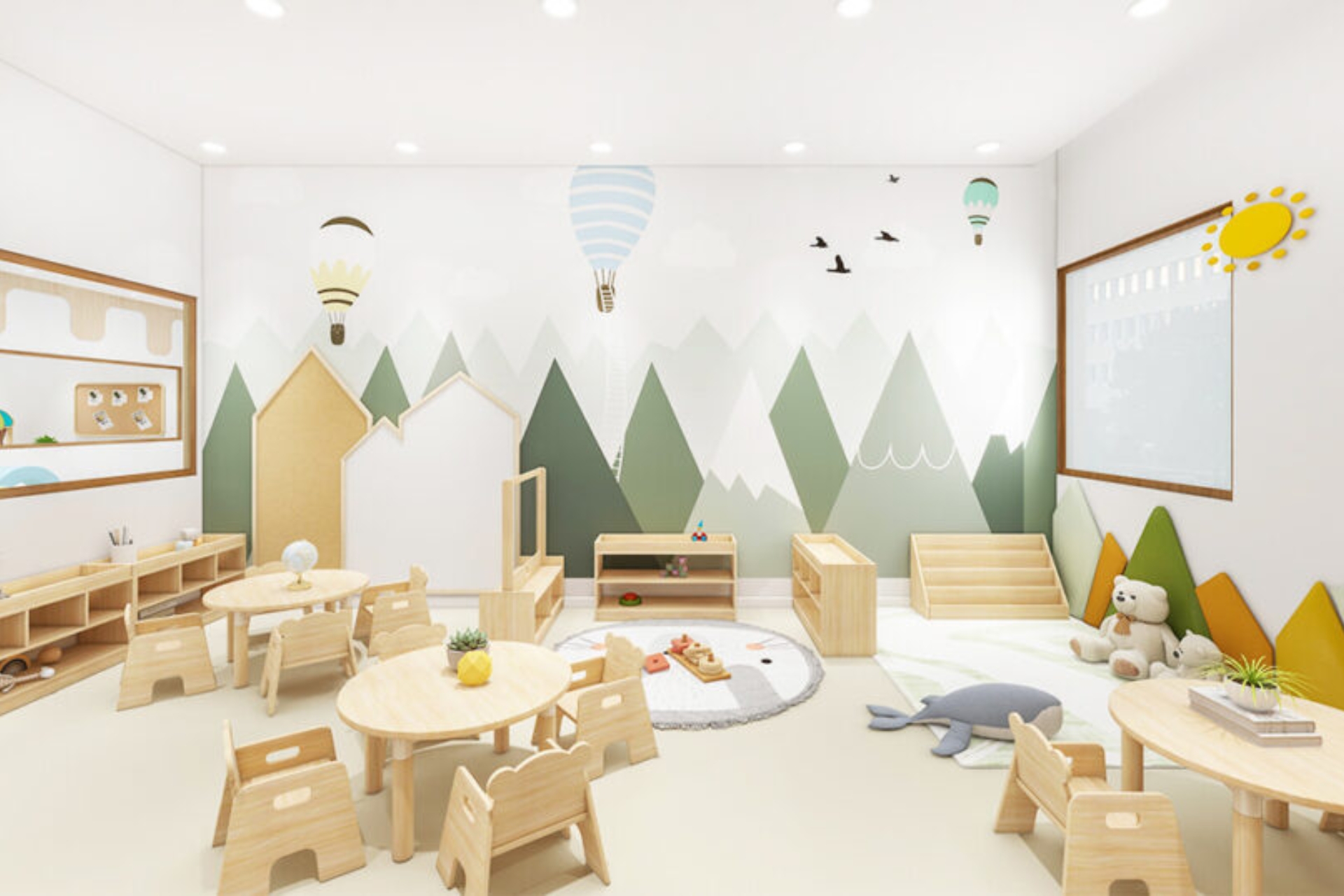
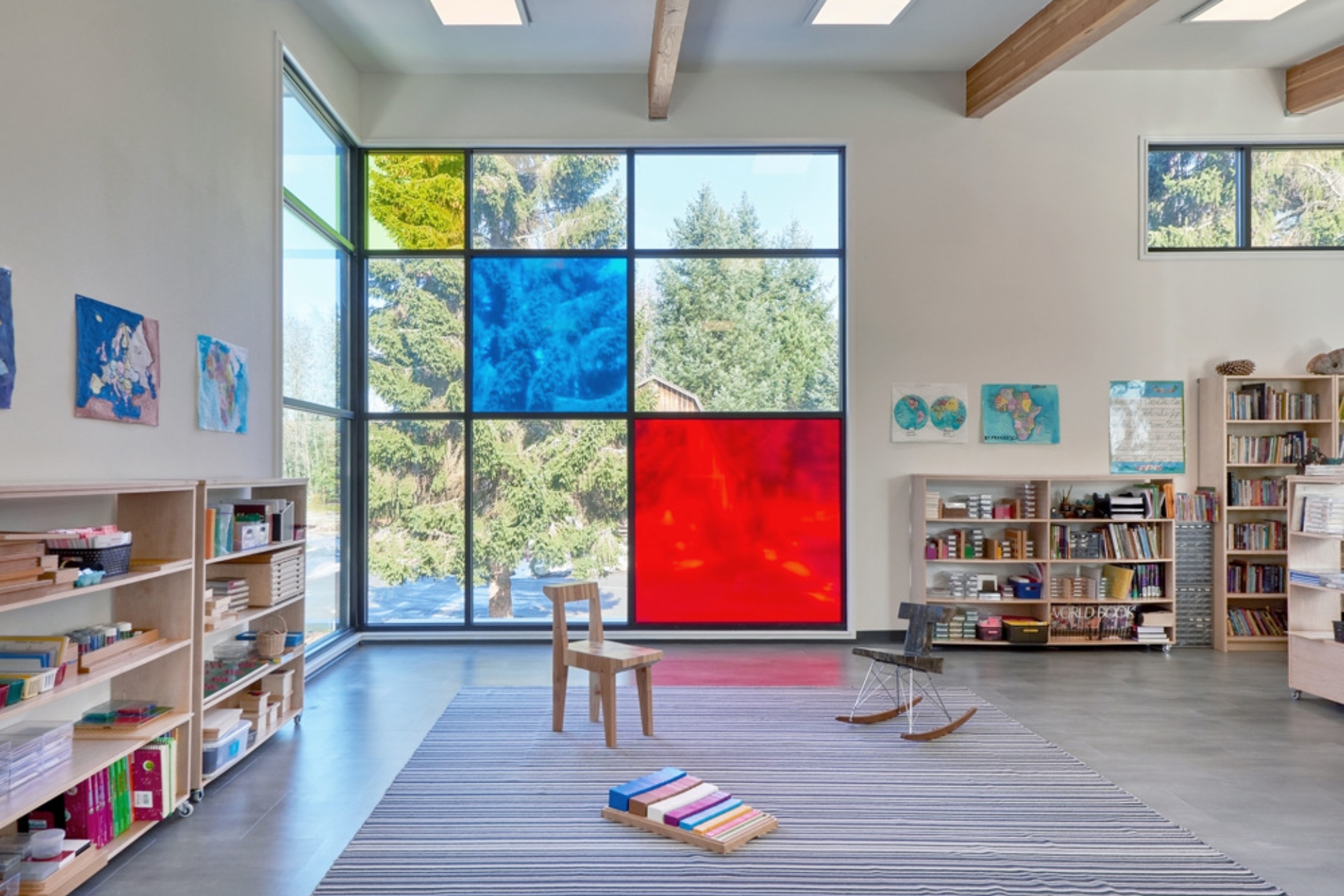
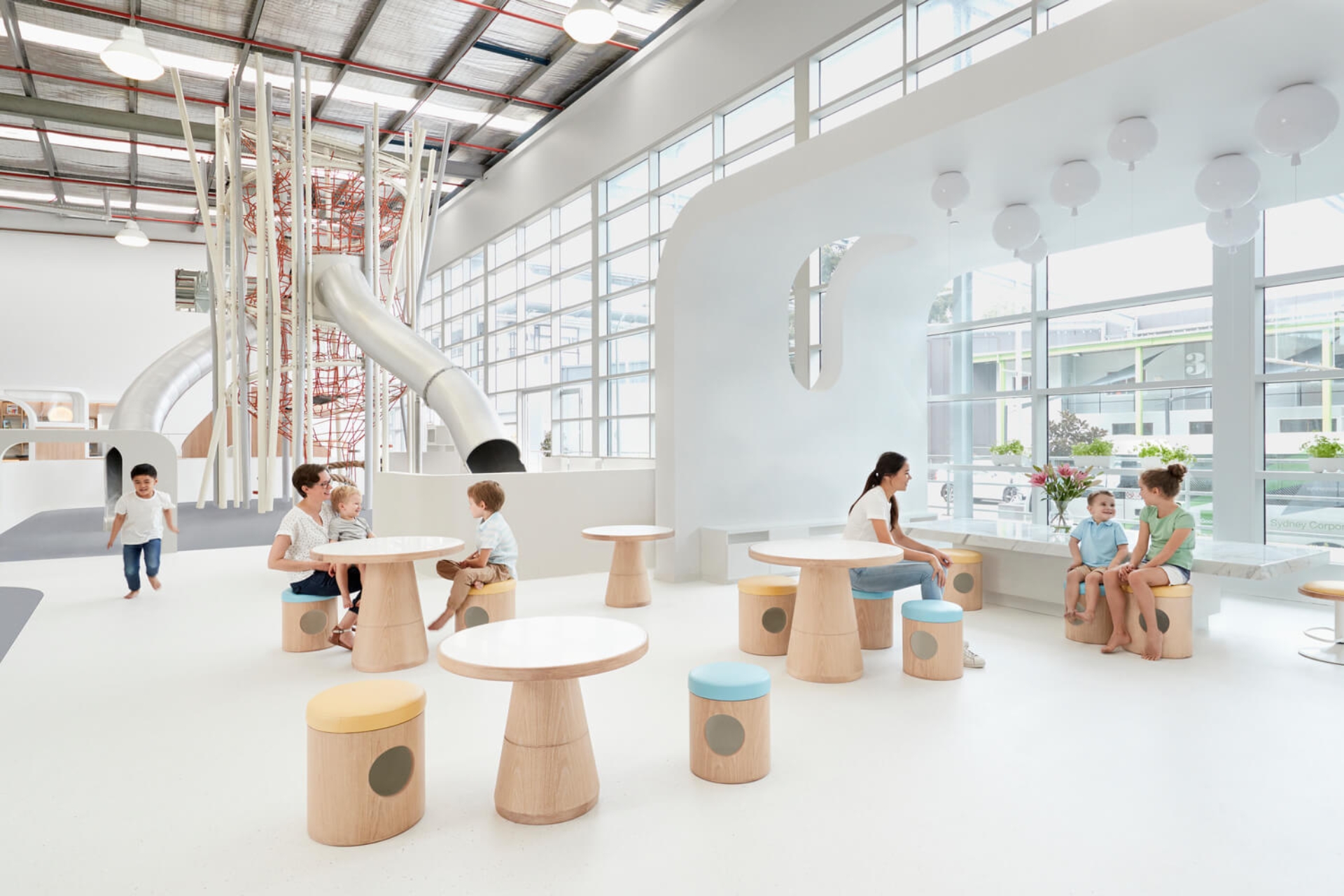

Characteristics of spatial design in the Montessori model
2. Designing International Schools Following the Reggio Emilia Approach
Overview of the Reggio Approach
The Reggio Emilia educational philosophy focuses on developing children’s teamwork abilities, cooperation, communication, and problem-solving skills. In this model, teachers act as collaborators, helping students explore everything and connect freely. Reggio Emilia emphasizes group education, enabling students to support one another in solving problems. This model also nurtures imagination, art, and collaboration in learning.
Spatial Design According to the Reggio Model
Spaces in Reggio Emilia schools are built to become foundations for creativity and collaboration:
-
Art Studio/Atelier: A dedicated classroom for artistic activities, where children can experiment with various materials and tools.
-
Flexible open spaces: Glass walls, wide hallways, and common areas encourage connection and interaction among children.
-
Living learning materials: Photographs and children’s work are displayed, creating a sense of being heard and respected.
-
Nature integrated into classrooms: Gardens, vegetable patches, and small ponds allow children to learn through real-life experiences.
Compared to the Montessori model, which emphasizes individuality, Reggio Emilia creates conditions for children to learn through group interaction and community experiences.
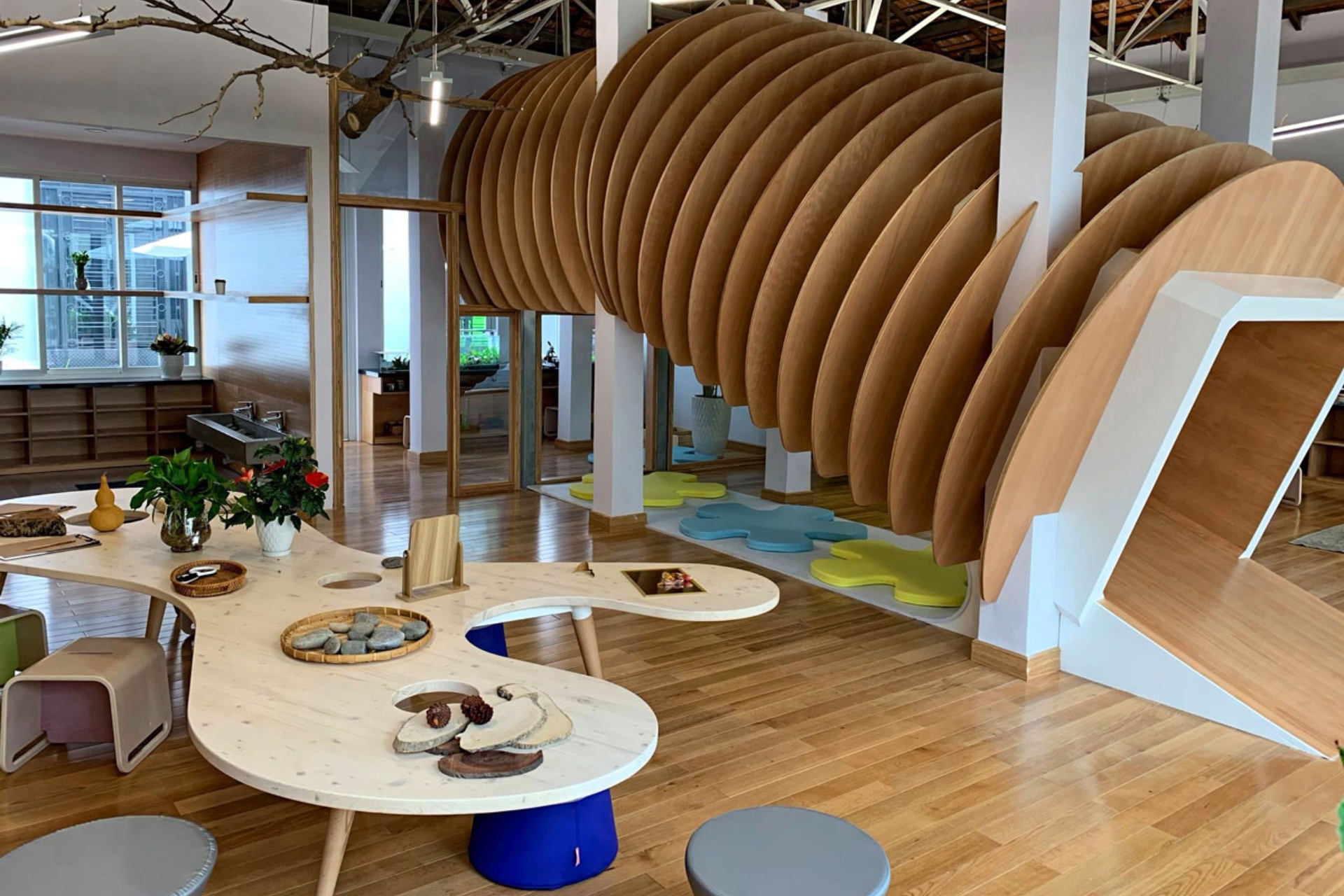
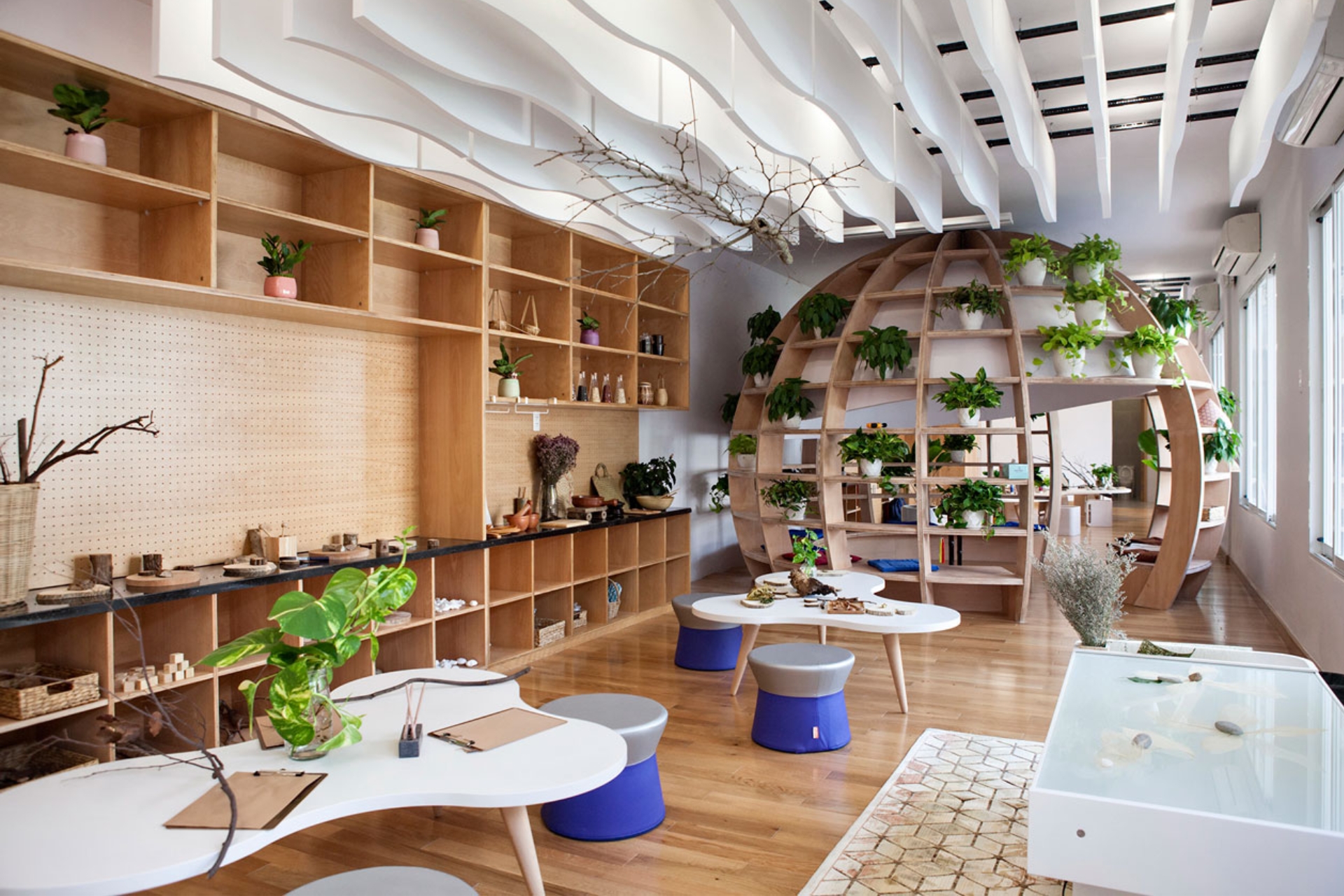
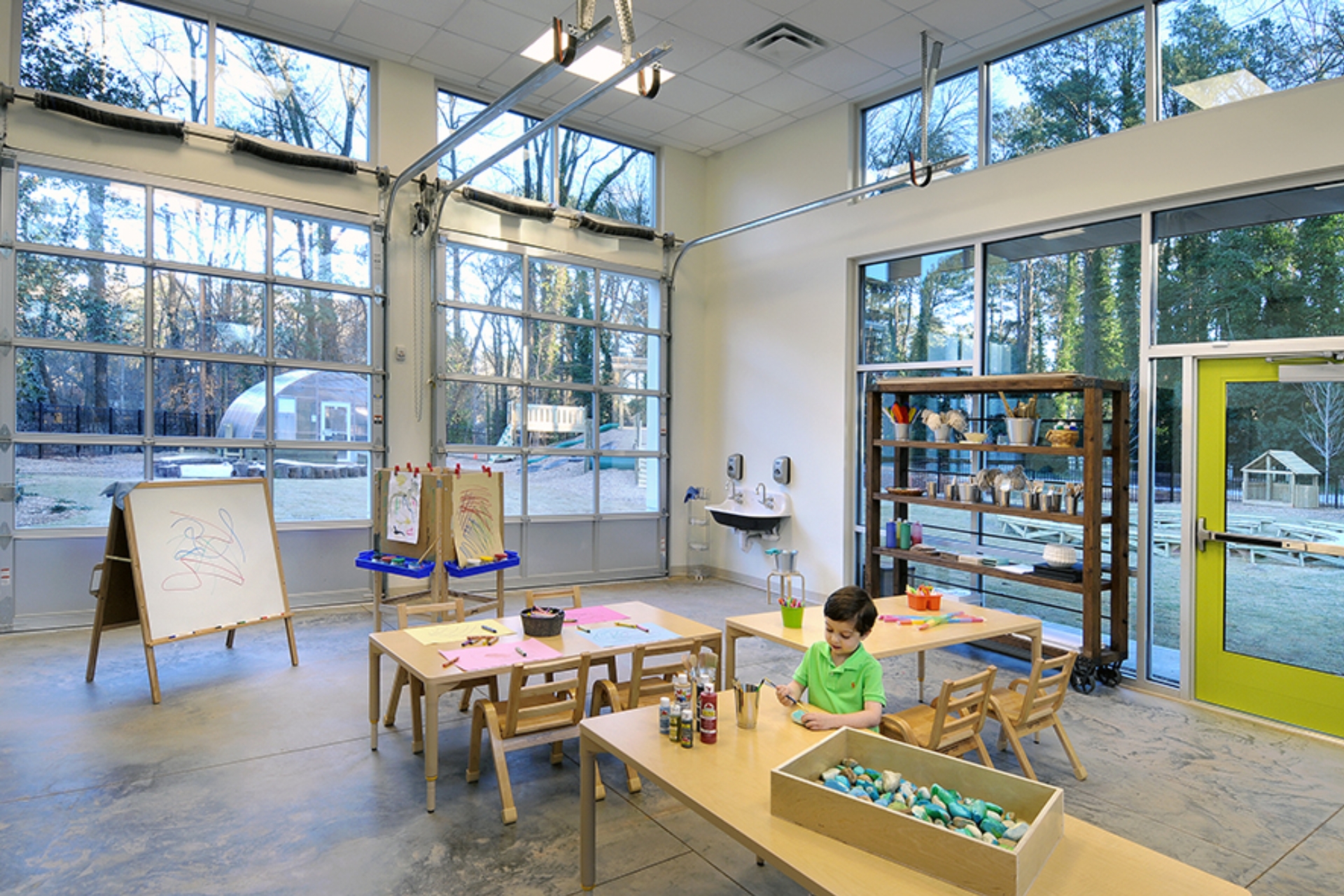
Characteristics of spatial design in the Reggio Emilia model
3. Designing International Schools Following the STEAM Model
Overview of the STEAM Method
STEAM (Science – Technology – Engineering – Arts – Mathematics) is a modern educational method that integrates science and the arts into curricula. For preschool, STEAM encourages children to explore the world through discovery, experimentation, and creativity, helping to form logical thinking alongside emotional and artistic development.
The STEAM model is especially applied in international schools due to its high practicality, preparing children with essential 21st-century skills: critical thinking, problem-solving, creativity, and collaboration.
Spatial Design According to the STEAM Model
Outstanding features in preschool design under the STEAM model include:
-
Mini laboratories: Spaces for children to conduct simple scientific experiments, sparking curiosity and exploration.
-
Maker spaces (creative zones): Areas equipped with craft tools and diverse materials for children to design and assemble their own products.
-
Technology integration: Interactive boards, digital devices, and educational robots help children access technology from an early age.
-
Art spaces: Music, drama, and visual arts are integrated to balance scientific thinking with creative expression.
Unlike Montessori and Reggio, which are rooted in traditional educational philosophies, the STEAM model embodies innovation and technology, making it suitable for globalized education trends.

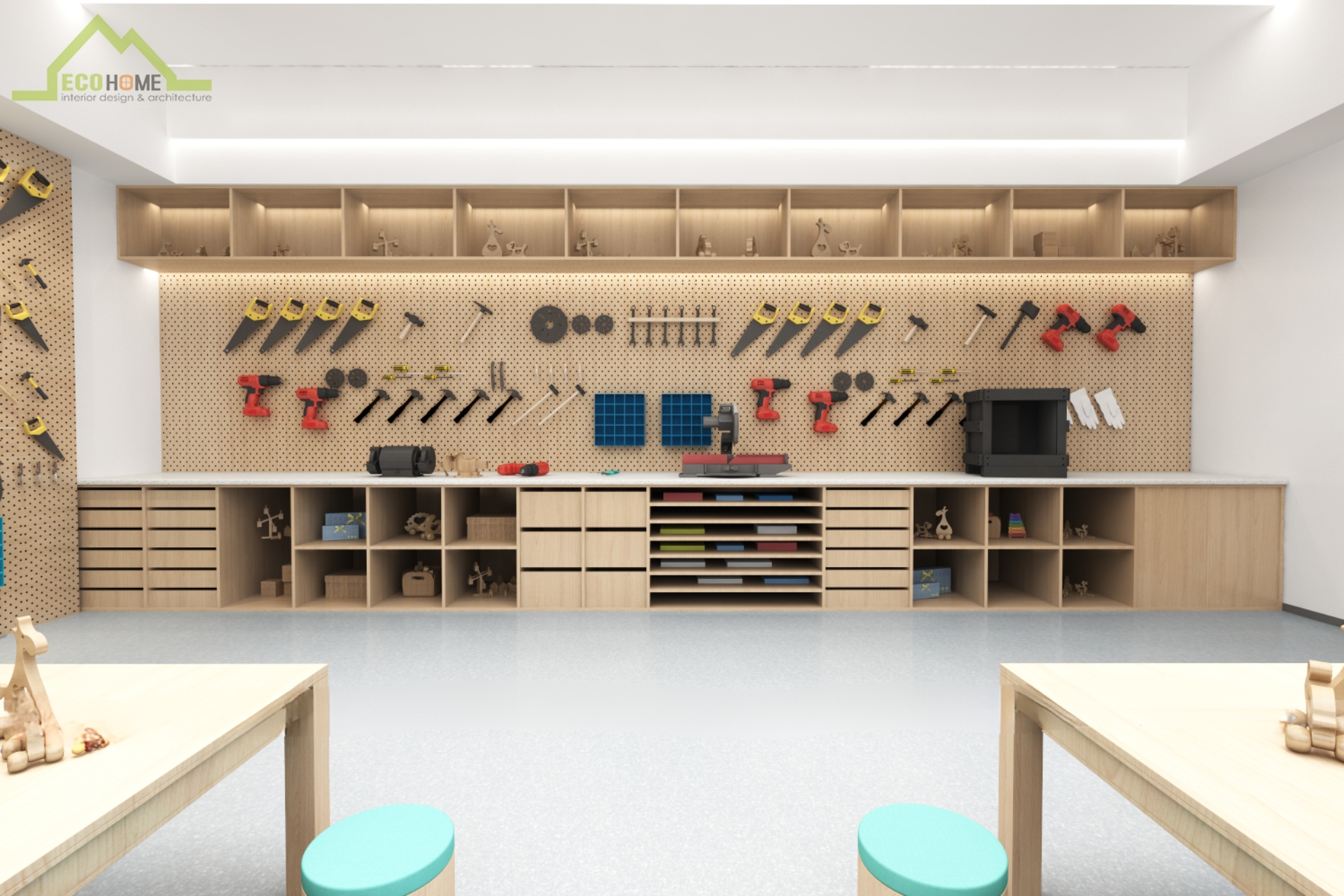
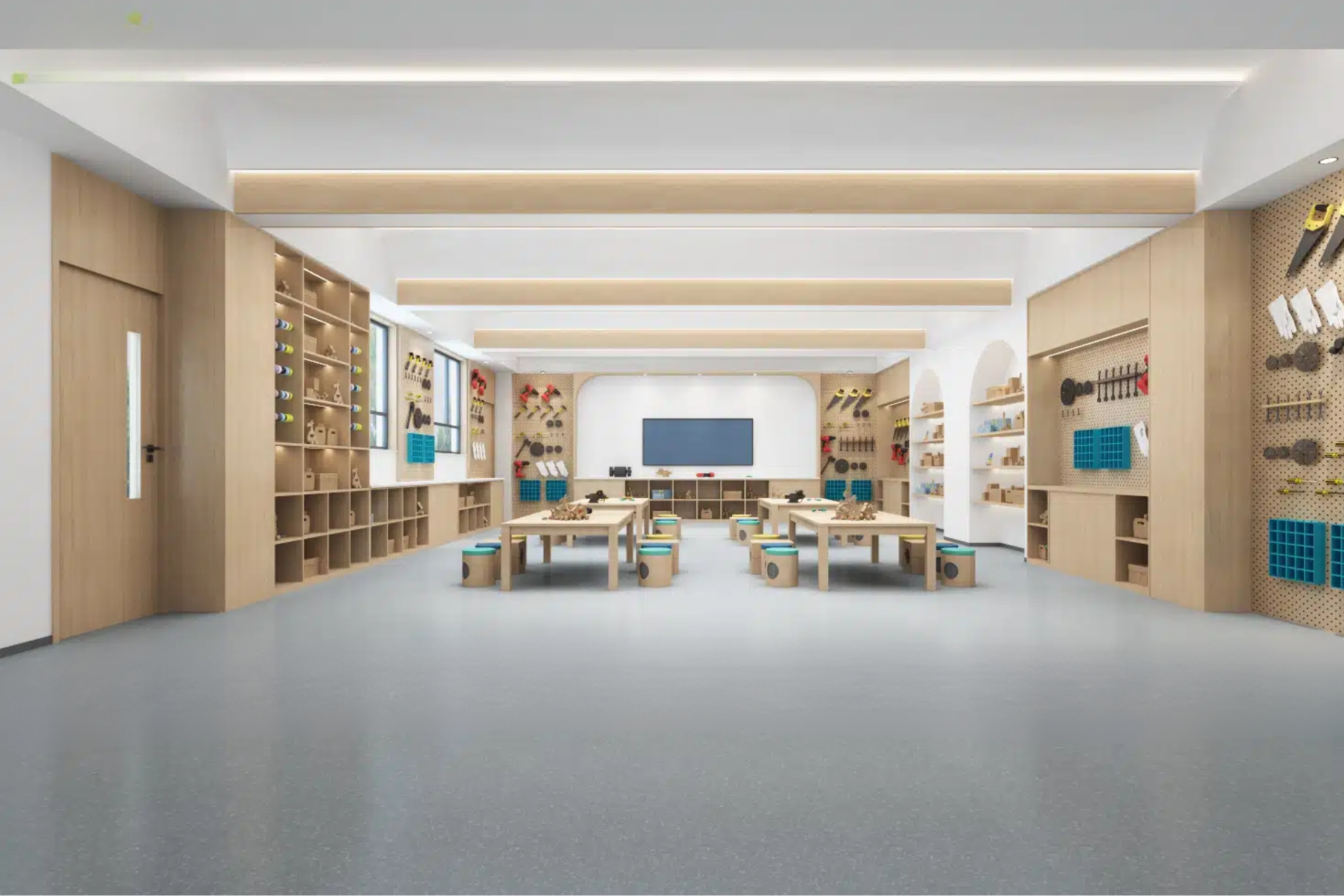
Characteristics of spatial design in the STEAM model
Conclusion
In international preschool design, the Montessori, Reggio Emilia, and STEAM models each bring unique values. For example, Montessori emphasizes independence and learning through personal experiences, Reggio encourages creativity and collaboration, while STEAM focuses on integrating science and the arts, preparing children with modern skills.
The choice of which model to follow depends on the educational philosophy pursued by the school as well as the developmental goals parents set for their children. However, the common ground is that all these models require specialized pedagogical spatial design, where architecture, interiors, and the environment play key roles in shaping children’s habits and ways of thinking. TECO hopes this article has answered questions regarding the clear differences among these educational models in terms of overall philosophy and spatial layout.


